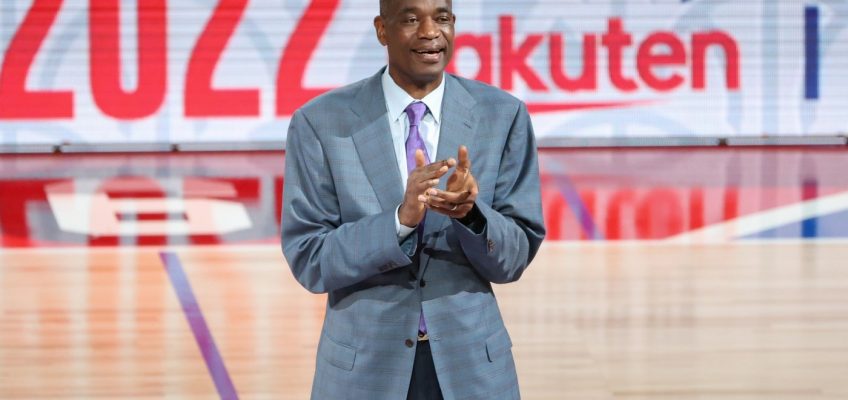Take your choice today. We’ve got a timely memoir by Minnesota’s first woman lieutenant governor, three stories of crime in old St. Paul, and selected/new poetry inspired by “up North.”
“Rise to the Challenge: A Memoir of Politics, Leadership, and Love”: by Marlene M. Johnson (University of Minnesota Press, $24.95)
My inauguration was a breakthrough for women in state government and a step on the journey to a public service career that I had envisioned for myself, yet it had happened so fast it was hard to believe. I felt ready for a new challenge, while at the same time I was aware that I had much to learn and that my long-held professional and personal insecurities lingered. — from “Rise to the Challenge”
(Courtesy of the University of Minnesota Press)
At the Brothers Deli in Edina Rudy Perpich ate chocolate cate and Marlene Johnson sipped coffee while the former governor invited Johnson to be his running mate in his 1982 campaign to reclaim the office he’d held from 1976 to 1979. That invitation sent Johnson on a journey that would make her Minnesota’s first woman lieutenant governor, serving from 1983 to 1991.
“I was excited to get started and determined to do all I could to do a good job and help create more opportunities for women and minorities in state government,” Johnson writes in her new memoir.
Johnson’s political/personal story couldn’t be more timely as we wait to see if the United States will have its first female president in Kamala Harris. If Harris wins, Gov. Tim Walz will become vice president and Lt. Gov. Peggy Flanagan will be Minnesota’s first female governor.
Now 78, Johnson began honing her organizational skills during her grade school days in Braham, Minn., when she founded the Helping Hands Club to visit elderly women. Later, she was leader of the Young DFL organization at Macalester College and organized for DFL candidates at the precinct level. She championed and worked for women such as Linda Berglin, elected to the Minnesota House in 1972.
Johnson first met Rudy Perpich in 1977 when she set up a meeting with the governor and foreign journalists from the Macalester World Press Institute. The governor’s staff insisted he had no time for a meeting but Johnson persisted (which she was good at). Perpich was so impressed he offered four seats on his plane for that evening’s trip to Wadena. Three would go to institute fellows and the fourth to Johnson.
Perpich felt that Johnson as his runnng mate was “the natural outcome of my range of experiences over the past 25 years,” she writes.
Since Johnson didn’t come from the Twin Cities, she built a circle of influential women supporters through business contacts as co-founder of a marketing/publicity business, Split Infinitive, as well as co-founding the Minnesota chapter of the National Association of Women Business Owners and the Minnesota Women’s Campaign Fund, a nonpartisan organization that raised money to support pro-choice women running for Congress and the U.S. Senate. (For those who remember local feminism in the 1970s, Johnson’s take on tension between the DFL Feminist Caucus and the Minnesota Women’s Political Caucus is particularly interesting.)
From the beginning of Perpich’s campaign he made it a point to empower Johnson, whom he tasked as lieutenant governor with leading Minnesota’s tourism strategy as an economic-development tool and chairing an appointments commission to advise him on candidates for all the state’s boards and commissions.
Marlene M. Johnson (John Kaul / University of Minnesota Press)
Johnson acknowledges some of Perpich’s Iron Range supporters were not pleased with her being on the ticket: “I was a young, pro-choice female whom they didn’t know. They could not understand how I would be an asset to the governor’s election.”
Perpich stressed to Johnson that she had an open invitation to attend any meetings on his schedule unless specifically told otherwise. He also urged Johnson to resist the legislative pressure to give up the separate lieutenant governor’s office space. (Although Johnson doesn’t say so, this was a smart power move because offices give status.)
By the early 1980s Johnson was open to a relationship, which she found in 1983 when she met Swedish businessman Peter Frankel, whom she married. They worked out a hectic schedule when they lived in Washington, D.C., and Sweden.
Johnson transitioned out of politics after Perpich lost the election to Republican Arne Carlson. During their last two years in office, Johnson and Perpich were not on good terms after he accused her of being disloyal to him. Surprised and dismayed, Johnson pointed out to the governor her loyalty and all the ways in which she had enhanced their administration.
The second half of Johnson’s memoir pivots to her private life as she writes of spending happy times at her and her husband’s summer house in Sweden. Then, her life changed again when Peter fell and was left with a traumatic brain injury. She had to accept that her best friend and strongest supporter would spend the rest of his life in a nursing facility in Sweden. While working as executive director/CEO of NAFSA: Association of International Educators, Johnson embarked on a schedule of working in Washington three weeks a month and spending the other week supervising her husband’s care in Sweden. She kept that exhausting pace for nine years, until Peter’s death in 2019.
Johnson lives in Washington, D.C., where she is a board member of the Washington Office on Latin America. In 1988 she was awarded the Royal Order of the Polar Star by the Kingdom of Sweden, established in 1748 to recognize personal efforts for Sweden or for Swedish interests.
Johnson will launch her book at 7 p.m. Monday at the University of Minnesota Humphrey School of Public Affairs, 301 19th Ave. S., Mpls. In conversation with Lori Sturdevant, who covered state politics and government at the Star Tribune and is the author or co-author of 12 books about notable Minnesotans. Free, but registration required. Go to eventbrite.com/e/rise-to-the-challenge-book-launch-with-marlene-m-johnson-tickets-972429963197.
“Mysterious Tales of Old St. Paul: Three Cases Featuring Shadwell Rafferty”: by Larry Millett (University of Minnesota Press, $24.95)
Shadwell Rafferty is a big, friendly Irishman, co-owner of a saloon in St. Paul’s swanky Ryan Hotel in the late 1800s. He’s curious about things and knows a lot about what goes on in St. Paul thanks to gossip among drinkers he serves. This information helps when he turns part-time detective aided by his African-American friend and partner Thomas “Wash” Washington.
Courtesy of the University of Minnesota Press
Millett, a former Pioneer Press reporter and architecture critic, wrote nine novels featuring Rafferty and the great Sherlock Holmes. In the final book, “Rafferty’s Last Case” (2023), Rafferty solves his own murder thanks to the notes he kept. Now Millett gives us three novellas (shorter than a novel, longer than a short story) set before Rafferty met the Great Detective.
The first story, “Death in the News,” begins with someone tampering with the big sign above the Pioneer Press building, amusing staffs at rival papers The Globe and Dispatch. Not so amusing is the deaths of journalists. The last story, “The Gold King,” involves greed and an elaborate scheme for revenge. The middle story, “The Birdman of Summit Avenue,” is a gentler tale although it does involve a murder. A crabby old recluse has turned his acres into a haven for for birds. Then he meets a little girl from the West Side Flats who loves birds as much as he does and they become friends. When the man is accused of murdering a boy he’d chased from his property for shooting at the birds, Rafferty tries to find the real killer. It ends with a tender epilogue that’s unusual in crime fiction.
Larry Millett (Matt Schmidt)
Because Millett wrote about architecture for the Pioneer Press as well as books on the subject, he is able to bring vivid life to 19th-century St. Paul, describing lost buildings such as the Ryan Hotel and those still standing, including James J. Hill’s mansion. He has fun writing about rivalries between the city’s three newspapers. Characters range from bigoted businessmen who live on Summit Avenue to petty criminals. Appearing in all the stories are Rafferty’s friend Det. Pat Nolan, the only member of the St. Paul police department who knows what he’s doing, and Merry Mike Gallagher, the corrupt police chief who laughs when he pounds a miscreant with a hickory stick.
Millett will launch his book at a free reading at 6 p.m. Sunday, Oct. 6, at Saint City Catering, 218 E. Seventh St., St. Paul, presented by SubText Books.
“Cotton Grass: New and Selected Poems of the North”: by Bart Sutter (Nodin Press, $19.95)
I’ve hoped my nature poems might serve among what William Stafford called the “millions of intricate moves” to arrive at justice — in this case, a way of living in and with the natural world rather than destroying it — and ourselves — with unbridled cleverness, arrogance, and greed. The longer I lived with the poem ‘”Cotton Grass” the more the plant — growing in out-of-the-way places yet lovely to discover, self-propagating, and surprisingly tenacious — the more the plant seemed symbolic of poetry itself. — from “Cotton Grass”
Courtesy of Nodin Press
Bart Sutter says his collection of new and selected poems represents “a half century’s engagement with the nature of our region.” By that he means the environment in and around Duluth, where he lives, and northern Minnesota into the Boundary Waters Canoe Area. A former Duluth poet laureate, Sutter has explored the back roads, trails, rivers, lakes and bogs of the North, returning with inspiration for poems about otters, moose and bobolinks to raccoons, as in this poem: “Abracadabra, out from behind/The trunk of a monumental white pine,/A foursome of small raccoons appears as one,/Shambling, stumbling, nudging and bumping/Each other, chirring and grumbling, muttering/and rumbling…”
“Cotton Grass” (a cloud-like plant that thrives in northern climes), is made up of selections from Sutter’s previous collections as well as new work. These are poems for people who think they don’t like poetry, easily understood and touching to us Minnesotans who share the poet’s love of the natural world and its opportunities, from canoeing to fishing and hiking.
Pulitzer Prize winner Stephen Dunn calls Sutter’s poetry “light years away (thank God) from post-modern tactics; one might even say Sutter’s aesthetic is pre-modern. There are many poems with rhyme and meter, an unabashed celebration of nature, and most amazingly, a healthy sampling of what we see little of these days, the affirmative poem.”
Bart Sutter (Courtesy of Nodin Press)
Sutter also writes essays, stories and plays. He is the only writer to win Minnesota Book Awards in three categories: “My Father’s War and Other Stories” in fiction, “The Book of Names” in poetry, and “Cold Comfort: Life at the Top of the Map” in creative nonfiction. At the end of October he and his brother, Ross, will take their Sutter Brothers poetry-and-music show to 23 public libraries in northern Minnesota.
Sutter will introduce “Cotton Grass” at 7 p.m. Monday at Magers & Quinn, 3038 Hennepin Ave. S., Mpls., with guest poet Tim Nolan. He’ll read at 2 p.m. Oct. 6 in the Cracked Walnut Literary Bridges series with Philip S. Bryant, Jody Lulich and Dylan Hicks at Next Chapter Booksellers, 38 S. Snelling Ave., St. Paul.
Cynicism is everywhere and it’s making us sick. Is this the antidote?
Column: A cookbook with 500 recipes? Too much is never enough
Banned Books Week 2024: Here’s what readers should know
In love, but happy apart: Cohabitation isn’t for all couples, author explains
20 mystery novels and crime collections for your fall book reading




